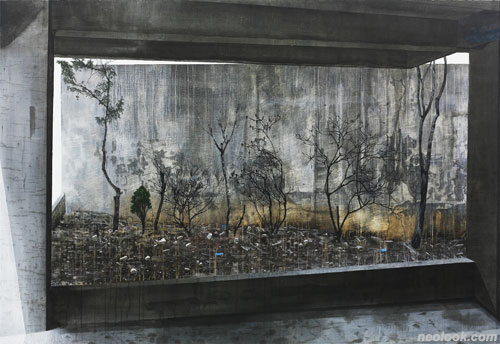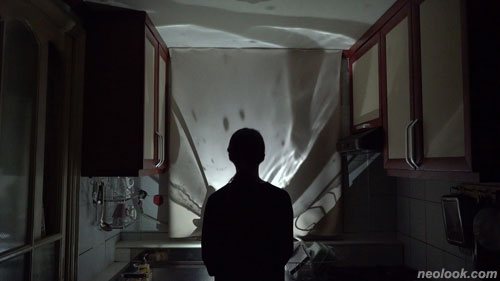- ● homepage
- ● archives
- ● restoration
- ● books
- ● big banners
- ● post board
- ■ neo's search
- ■ about us
- ■ 게재방법 안내
- 개인정보처리방침

- [email protected]
- Tel. 02_335_7922
- Fax. 02_335_7929
- 10:00am~04:30pm
- 월요일~금요일
- 3/3(월) 대체공휴일

2017 서울 포커스 [25.7]
2017 Seoul Focus [25.7]展 2017_1212 ▶ 2018_0311 / 월요일 휴관
초대일시 / 2017_1214_목요일_05:00pm
참여작가 곽이브_김성수_김웅현_김혜원_김희천 동양대학교 디자인학부_리슨투더시티_박세진 박지희_박철수_안경수_안홍근_이은우 이해민선_임동근_장덕화_정지돈_조익정 진짜공간_최고은_최승준_최윤_추미림_홍진훤
관람시간 / 10:00am~08:00pm / 주말,공휴일(12~2월)_10:00am~06:00pm 주말,공휴일(3월)_10:00am~06:00pm / 월요일 휴관 뮤지엄나이트(1,3번째 금요일),문화가 있는 날(마지막주 수요일)_10:00am~10:00pm
서울시립 북서울미술관 SeMA, Buk Seoul Museum of Art 서울 노원구 동일로 1238 (중계동 508번지) 전시실1, 2 Tel. +82.(0)2.2124.5201 sema.seoul.go.kr sema.seoul.go.kr/bukseoul
2017 서울 포커스는 서울시립 북서울미술관이 자리 잡은 상계 신시가지의 준공 30주년을 기념하여 개최된다. 서울 노원구 상계동 신시가지는 1980년대 신군부 정권 시절 인구급증에 의한 주택 부족 문제를 해결하기 위해 정부 주도하에 계획된 대규모 공동주택 프로젝트로, 비슷한 시기에 계획된 강남과 과천 신시가지보다 그 규모가 훨씬 크며 '불수사도북(불암,수락,사패,도봉,북한)산'으로 둘러싸여 수려한 자연 경관을 자랑한다. ● 이번 전시의 제목이기도한 [25.7]은 공동주택에서 세대의 소유자가 독점으로 사용하는 전용면적 85m2를 의미한다. 이는 1972년 박정희 정부의 '주택건설촉진법'에 의해 마련된 국민주택 정책의 일환이자 4~5인 기준에 맞춰진 '가장 보편적이고 표준적인 면적기준'으로, 이후 40년이 지난 현재에도 한국의 보급형 공동주택과 주거문화에 큰 영향을 미치고 있다. 특히 주택공사에 의해 개발된 상계 신시가지는 전용면적 25.7평, 즉 85m2를 기준으로 설계되었으며 여타 신시가지와는 차별적으로 여러 평형으로 구성된 각 가구를 한 동에 섞은 것이 특징이다.

- 홍진훤_Water-fall #04_피그먼트 프린트_135×180cm_2017

- 안경수_화단_캔버스에 아크릴_100×160cm_2013_서울시립미술관 소장
대단지 아파트를 비롯한 공동 주택의 확산은 가파른 국민소득 상승과 '내 집 마련' 욕구 등에 의해 아파트를 투기의 대상으로 전락시켰고, 이름만큼 다양해진 브랜드의 고층 콘크리트 주택은 30년이 지난 오늘까지 쉴 새 없이 되풀이되고 있는 건설(신도시)과 재건축(뉴타운)의 틈바구니 속에 서울을 포함한 위성 도시의 보편적인 풍경으로 자리 잡았다. 그러나 이러한 보편적이고 균질한 거주 환경 속에서 가족이 구성되고 공동체의 삶이 시작되면서 아파트를 고향으로 둔 소위 '아파트 키즈'들에 의하여 삭막함이나 획일화로 비난 받던 판상형의 콘크리트 주거지를 사유하는 방식과 태도에 많은 변화가 생겨나게 된다.

- 곽이브_면대면 시공-건축 프로젝트: 역할 삼각창h _피그먼트 프린트_84.1×59.4cm_2017

- 김혜원_설거지_영상, 사운드_00:07:50_2015

- 김희천_바벨_단채널 HD 영상, 흑백_00:21:00_2015_국립현대미술관 소장
2017서울 포커스 [25.7]은 이렇듯 지역생활권의 상업시설과 학군과 같이 신도시를 이루고 있는 인프라 연구를 통해 아파트 공동체 커뮤니티의 주거 생태계를 파악하는 전시이다. 또한 단일한 주거환경과 제한적인 자연적 요소들 속에서 취미와 레저 활동을 영위하고자 하는 다양한 층위의 삶의 저변을 탐색하는 동시에, 가족주의에 기대어 있는 중산층 라이프 스타일에 대한 비판적 접근을 유도함으로써 도시 구성원의 공적·사적 영역에서 아파트를 조망한다. 뿐만 아니라 계획된 아파트 단지의 전용면적과 공용면적 등 내·외부의 분할된 세계의 틈바구니 속에서 장소에 대한 의미를 찾는 아파트 키즈의 시선을 관찰하고, 그 의미를 추적하고자 하는 전시이다. ● 전시는 1, 2부로 나뉘어 상계 주공아파트가 가지는 역사적, 장소적 특징을 의·식·주를 중심으로 아파트 문화를 영위하는 베이비붐 세대의 삶의 특징을 조망하는 1부와, 대도시의 아파트 생태계에서 태어나고 자란 에코세대의 시선으로 현대미술을 소개하는 2부로 구성하여 동시대 한국 문화와 미술에 깊게 자리 잡은 아파트의 조형적, 서사적 위치를 가늠하는 자리를 마련한다. ■ 서울시립 북서울미술관

- 이해민선_'에이피티'라는 이름의 짐승_아파트도면을 이용한 컴퓨터 드로잉, 핸드드로잉_95×124cm_2008_서울시립미술관 소장

- 조익정_옥상곰_DV 6mm_00:10:50_2012
Seoul Focus 2017 celebrates the thirtieth anniversary of Sanggye New Town, the home of SeMA, Buk-Seoul Museum of Art. Sanggye New Town, located in the Nowon-gu district of Seoul, began as a large-scale public housing project implemented by the Korean government under the military regime in the 1980s to solve housing shortage in the city. Sanggye New Town was not only one of the largest new town developments in Seoul, even surpassing those in Gangnam and Gwacheon districts built around the same period, but also widely known for its breathtaking landscape surrounded by five mountains – Buramsan, Suraksan, Sapaesan, Dobongsan and Bukhansan. ● The title of this exhibition, [25.7], refers to the uniform size of apartments in the New Town districts. Measured in pyeong, a Korean unit for measuring floorspace, the space roughly equals 85 square meters. The uniform size was adopted as part of the Housing Construction Promotion Act, enacted in 1972 under the Park Chung-hee administration, and was declared "the most universal and standard unit of floorspace" fit for the average family of four or five. Even after forty years, the unit is still widely used today in public housing projects and residential complexes. Developed by the government-owned Korea Land and Housing Corporation, Sanggye New Town was also built according to the 25.7 pyeong unit, but incorporated different layouts within the building, which differentiated it from the other new towns. ● On the other hand, the widespread distribution of public housing and large apartment complexes, coupled with rising national income and people's desire to become a homeowner, overheated the real estate market in Korea and turned apartments into objects of speculative investment. Thirty years later, the tall concrete mansions are now part of the everyday landscape in Seoul and its satellite cities, with an endless cycle of construction and reconstruction repeating itself in the background. Nevertheless, people's lives continued in these concrete jungles, forming families and communities within them. A whole new generation born and raised in apartment complexes has emerged since, and this so-called "apartment generation" is now leading the way in changing the perceptions and attitudes towards their concrete, urban homes that were once criticized for their desolate and standardized environment. ● In this context, Seoul Focus 2017 [25.7] explores the residential ecosystem of apartment communities in the city by examining its infrastructures such as commercial buildings and school systems in the local districts. The exhibition also looks into the development of diverse hobbies and leisure activities among the residents, revealing the diverse spectrum of life that lies underneath the seemingly standardized urban environment. At same time, [25.7] takes a critical approach to the family-centered lifestyle of the middle class in Korea. From the perspective of the so-called "apartment generation," the exhibition reconsiders the meaning of apartments as both private and public space which define our cities. ● The exhibition is presented in two parts. Part 1 examines the historical and local significance of Sanggye New Town and apartment culture through the everyday lives of baby boomers. In contrast, Part 2 traces the echo boomers, a new generation born and raised within the apartment ecosystem. Presenting contemporary artworks from their perspectives, the exhibition hopes to explore the unique significance of apartments specific to Korean culture and art. ■ SeMA, Buk Seoul Museum of Art
Vol.20171212b | 2017 서울 포커스 [25.7] 2017 Seoul Focus [25.7]展

